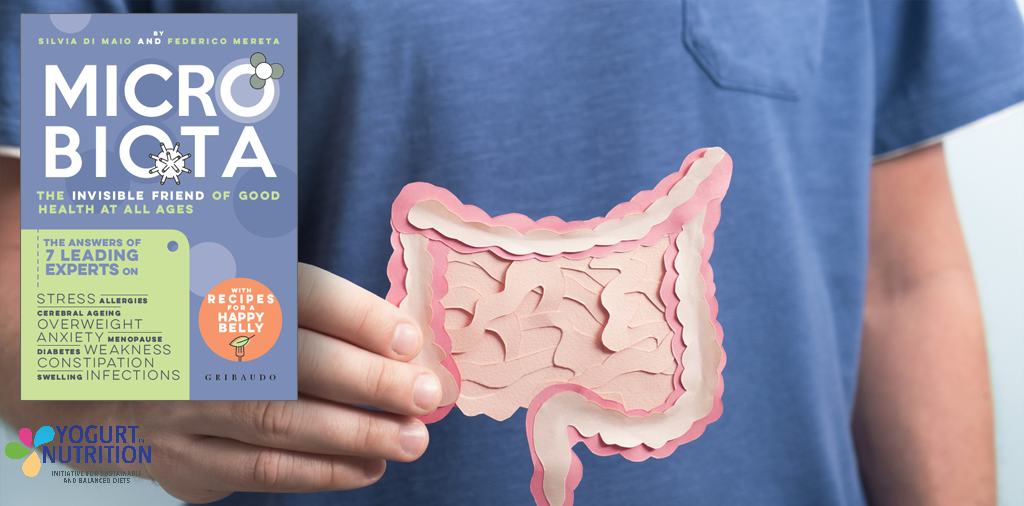Science tells us that the gastrointestinal tract is the “most densely populated” district, with about 1011 to 1012 microorganisms per millimeter. That make about 100,000 billion microorganisms that inhabit the intestines of each one of us! To get an idea of what this figure means, just consider that the global human population is under 8 billion!
How is the work of micro-organisms organized?
Of these 100,000 billion microorganisms, about 70-80% belong to one of only two groups or phyla: Firmicutes and Bacteroidetes, but other phyla coexists and every microorganism performs the functions typical of its species in order to survive.
However, we can imagine each species as part of a team, the gut microbiota, where they each contribute and collaborate with the others. As a result, the gut microbiota performs tasks that none of the species comprising it would be able to carry out independently. “Species-specific” functions depend on differences in the DNA between one species and another. If we add up all the genes of the different species present in our gut, we have a total of about 3.3 million.
Taken together, these genes make up the genetic pool of the gut microbiota, so special that it has a name of its own: microbiome. This genetic richness is bound to result in an equally rich pool of metabolites (products of the various metabolic pathways), which interact with our body’s complex metabolic networks.
What can the gut microbiota do?
Science has shown that the gut microbiota interacts with the body in many fields:
Immunity
The microbiota is “comfortable” where it is and has no intention to make room for new invading microorganisms. It thus counteracts the invasion of pathogenic species, which can potentially cause disease in humans. Furthermore, scientific studies have shown that the gut microbiota is also able to modulate and activate the immune system during its development. By also establishing a delicate balance with the intestinal epithelial cells themselves, the microbiota plays a protective role, capable of limiting the production of toxic substances associated with an imbalance at the immune (and neurovegetative) level.
Digestion and metabolism
In the gastrointestinal tract, the microbiota also affects intestinal motility and digestion. The microorganisms are processing some food residues that we would otherwise be unable to process. By fermenting fibers and breaking down protein compounds, our gut microbiota produces short-chain fatty acids, a source of nourishment for the colon cells. These processes, moreover, produce vitamins and other compounds, which can process drugs, counteract the proliferation of pathogens and contribute to the development of immune cells.
Neurosensitivity and gut-brain axis
The microbiota may also be able to influence communication between the intestine and the brain by intervening in the mechanisms of so-called “visceral sensitivity”, which is responsible for receiving and transmitting stimuli from the internal organs, as we will discuss in detail later. In short: our bacteria could affect mood and metabolism.
The substances produced by the microbiota
The microbial gut flora is able to produce a wide variety of molecules that perform an equally wide range of different functions in the human organism:
- Growth factors, which act at the level of the intestinal epithelium
- Antibacterial substances, which protect the wall of the intestinal canal and the structures attached to it (collectively called the “intestinal barrier”) and maintain its integrity;
- Neurotransmitters and hormones, influencing the perception of pain, motility and intestinal secretion
A fragile balance
Eubiosis is defined as a “situation of qualitative and quantitative equilibrium of the species present in the microbiota”. In order to achieve eubiosis, the various species from the gut microbiota must interact with each other and with the host organism, maintaining the latter’s homeostasis.
On the contrary, when the intestinal microbial community undergoes qualitative and/or quantitative changes, the associated functional mechanisms also change. In this case we speak of dysbiosis. This condition is often associated with human diseases such as obesity, diabetes, asthma, chronic inflammatory intestinal diseases, or neurodegenerative and psychiatric diseases.
This post is written on the basis of the book “Microbiota”.
“Microbiota” is published in english by the Danone Institute Italy and Danone Institute International. It gathers a mix of historical, anthropological and scientific concepts explaining why research on gut bacteria, from ancient texts to the most recent scientific evidence, is a sector of great interest for science. Thanks to a Q&A structure, 7 recognized experts explain several topics considering the different ages and conditions in life. The book is available in pdf and e-book format (on the Danone Institute International website)



